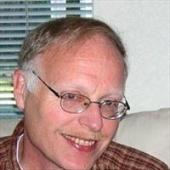EBay's Secret Data Center Efficiency Weapon: Fuel Cells
EBay ups the data center efficiency race with solid oxide fuel cells that use natural gas, steam, air and high operating temperatures to create an electrochemical process to produce electricity.
June 23, 2013


Facebook's Futuristic Data Center: Inside Tour
Facebook's Futuristic Data Center: Inside Tour(click image for larger view and for slideshow)
Facebook grabs all the glory when it comes to efficient operations, but eBay is working hard behind the scenes to produce a data center that consumes less power but still sustains $68 billion a year in transactions. It's the first major data center in the U.S. to employ fuel cells as its primary power source.
Data centers represent 2% of the electricity consumed in the U.S., a figure that is expected to go higher as a massive build-out occurs to provide cloud services, support more powerful websites and provide application services to millions of mobile phones. There's also a rivalry underway among major Web service providers to build the most efficient facility with the least environmental impact.
From a noxious gas point of view, the least polluting electricity production is hydro power. Amazon.com and Microsoft have built data centers in the Pacific Northwest that rely primarily on hydroelectric power. But not all data center builders have the option of locating there. eBay, now a mature Web services company, has introduced some new wrinkles in that competition.
EBay first established a more conventional unit in its Topaz data center, which opened in May 2010 on a 60-acre site outside Salt Lake City. In its second phase, dubbed Project Quicksilver, eBay implemented fuel cells as an onsite power source to generate six megawatts of electricity. It used the public utility grid as its backup power source, which allowed eBay to do away with the uninterruptible power supply and backup generators that are a standard and expensive part of traditional data centers' design.
[ Want more on how eBay measures efficient power use? See EBay Launches New Digital Service Efficiency Standard. ]
EBay put solar panels on the roof, but they contribute only a small amount of the total power needed: 924,013 kilowatt hours. Its 24-hour supply comes from the bank of 30 fuel cells that it's built about 100 feet from where its aisles of servers, storage and network switches stand ready to consume the power. The short distance between source and use means little energy is lost in transmission, while the grid typically loses 10-12% as it moves electricity from a generating plant over transmission lines to the consumer.
Fuel cells are what powered Apollo space craft missions on their way to the moon but, in general, they haven't proved practical for sustained power generation for a general purpose use. Earlier designs have required precious metals, corrosive acids and high temperatures to operate, producing small amounts of electricity reliably but at high cost.
EBay contracted with Bloom Energy to establish a different type of fuel cell in its Salt Lake City data center. Bloom has designed solid oxide fuel cellsas a sort of giant refrigerator-sized battery, using natural gas, steam, air and high operating temperatures to create an electrochemical process that produces electricity. Unlike a battery, it can do so without wearing out, as long as the right combination of elements is present.
In a solid oxide fuel cell, steam is combined with natural gas to produce "reformed fuel" loaded with simple methane molecules, which flow across the part of the cell that resembles a battery's anode. On the other side of the cell is the cathode, over which superheated air is flowing. No combustion occurs; instead, oxygen ions from the air combine with the methane in an electrochemical reaction to produce water and an outflow of electricity from the cell. A small amount of carbon dioxide is produced as well, but far less than would be produced by generating a similar amount of electricity from coal. The process also produces heat, which is used to keep the process going.
An animated diagram of the process can be seen at the Bloom Energywebsite.
In effect, Bloom's fuel cell is a battery that constantly recharges itself. Its anode and cathode are made from a ceramic electrolyte material coated with special inks. The parts cost less to manufacture than previous fuel cell designs, said Peter Gross, VP of mission critical systems at Bloom, during a session on data center design Thursday at GigaOm's Structureconference.
No combustion occurs in the fuel cell. It's not clear whether the process requires the heat of natural gas combustion outside the cell to get it going, in addition to using the gas as a chemical feed stock.
If eBay hadn't established the fuel cell generation at its plant, it could have gotten small amounts of electricity six hours a day from its solar cells on the roof. It would otherwise have been dependent on the public utility grid. In Utah and nearby Wyoming, where coal is surface strip-mined, 94% of the electricity on the grid comes from burning coal. "It's dirty and it's cheap," noted Dean Nelson, eBay's VP of global foundation services.
EBay has taken a page from Facebook's book. It's declared it will become a responsible, green corporation, reducing its carbon emissions in its operations. Its overall power usage effectiveness (PUE) rating on Topaz is 1.4, much better than the 2.0 for the typical enterprise data center. The PUE metric illustrates how efficiently a data center operator is using the electricity brought into its facility for computing purposes. A perfect PUE rating would be 1.0: all the energy brought goes to running compute devices.
Facebook, at its new Prineville, Ore., data center, is still the PUE leader. It claims it's achieved a PUE rating of 1.06-1.07, based primarily on its reliance on a passive cooling system rather than chillers (large air conditioning units). EBay relies on the cool ambient air around Salt Lake for part of the year, but still uses chillers during hot weather. A highly reliable Tier IV data center, as defined by the Uptime Institute, has yet to be built in the U.S. without chillers.
But eBay is forging ahead of other data center builders with its fuel cell experiment. Its closest rival on that front is Apple, which is using a huge solar panel farm (half of which occupies this photo) and 24 of Bloom's fuel cells to supply power to its new data center being built in Maiden, N.C.
Gross said it was unlikely such facilities would have been attempted in the past, but "the whole landscape is changing dramatically with the abundance of natural gas," said Gross. EBay was able to negotiate a 15-year agreement that locked in a price for natural gas as a feed stock for the fuel cell, something that would have been impossible not too long ago. In the last three years, renewed exploration and extraction through the process of fracking, or fracturing of underground rock strata, have increased long-range natural gas reserves in the U.S.
Modern data center design is looking for greener operation along with greater efficiency and resiliency. "What eBay has done (at its Topaz site) is leverage all three elements," said Gross. The fuel cell approach contrasts most sharply with data centers that depend on coal-fired, electricity-generating plants. Coal plants still emit large amounts of sulfur dioxide, carbon dioxide and heat, contributors to acid rain and global warming. Fuel cells appear to produce a much lower level of pollutants.
Also, designing around a fixed-price, fuel-like natural gas represents both a pollution reduction and cost saving feature. Using electricity off the grid has been a rising cost for data center operators. Nelson said electricity costs have risen 5.5% a year for the past eight years in California.
Nelson noted eBay wanted to advance the art of data center construction and produce a smaller carbon footprint in its operations, then share how to do so with the world the way Facebook shared its data center server design in the Open Compute Project.
"We've basically put our money where our mouth is. This is where the transactions go through, this is our revenue," he told the Structure audience.
One obstacle to getting other parties to follow eBay's example is that a data center with fuel cells as the primary power source doesn't match the Uptime Institute's current requirements for data center resiliency. Nelson said it will be necessary to start "a dialogue with the Uptime Institute" to get it to consider the attributes of fuel cells. Nelson believes he has "a more resilient data center" with fuel cells than through reliance on traditional supply and backup means. One fuel cell can fail without bring down the data center. The total power supply comes from a repetition of many identical fuel cell units, and the loss of one represents a small drop in the available power, not a systemic failure.
By eliminating onsite diesel generators and uninterruptible power supplies, eBay has drastically changed the backup power side of data center design. "Those are huge components. You no longer need them in this design," said Nelson.

